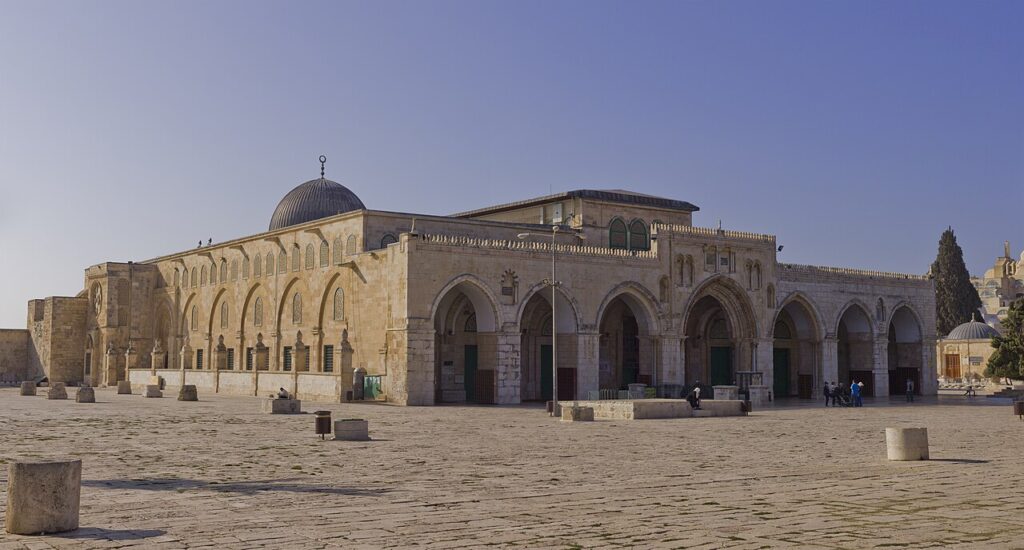Al-Aqsa Mosque
The Jami al-Aqsa, congregational mosque of Al-Aqsa, also known as the Qibli Mosque or Qibli Chapel al-musalla al-qibli, prayer hall of the qibla south, is the main congregational mosque or prayer hall in the Al-Aqsa mosque compound in the Old City of Jerusalem. In some sources the building is also named al-Masjid al-Aqsa, but this name primarily applies to the whole compound in which the building sits, which is itself also known as “Al-Aqsa Mosque”. The wider compound is known as Al-Aqsa or Al-Aqsa mosque compound, also known as al-Ḥaram al-Sharīf ‘The Noble Sanctuary.

During the rule of the Rashidun caliph Umar (r. 634–644) or the Umayyad caliph Mu’awiya I (r. 661–680), a small prayer house on the compound was erected near the mosque’s site. The present-day mosque, located on the south wall of the compound, was originally built by the fifth Umayyad caliph Abd al-Malik (r. 685–705) or his successor al-Walid I (r. 705–715) (or both) as a congregational mosque on the same axis as the Dome of the Rock, a commemorative Islamic monument. After being destroyed in an earthquake in 746, the mosque was rebuilt in 758 by the Abbasid caliph al-Mansur. It was further expanded upon in 780 by the Abbasid caliph al-Mahdi, after which it consisted of fifteen aisles and a central dome. However, it was again destroyed during the 1033 Jordan Rift Valley earthquake. The mosque was rebuilt by the Fatimid caliph al-Zahir (r. 1021–1036), who reduced it to seven aisles but adorned its interior with an elaborate central archway covered in vegetal mosaics; the current structure preserves the 11th-century outline.
During the periodic renovations undertaken, the ruling Islamic dynasties constructed additions to the mosque and its precincts, such as its dome, façade, minarets, and minbar and interior structure. Upon its capture by the Crusaders in 1099, the mosque was used as a palace; it was also the headquarters of the religious order of the Knights Templar. After the area was conquered by Saladin in 1187, the structure’s function as a mosque was restored. More renovations, repairs, and expansion projects were undertaken in later centuries by the Ayyubids, the Mamluks, the Ottomans, the Supreme Muslim Council of British Palestine, and during the Jordanian occupation of the West Bank. Since the beginning of the ongoing Israeli occupation of the West Bank, the mosque has remained under the independent administration of the Jerusalem Islamic Waqf.
Islam is perfect, and any mistakes are solely mine. I take responsibility for my mistakes and seek your pardon for any errors I may have made. And Allah Knows Best!


